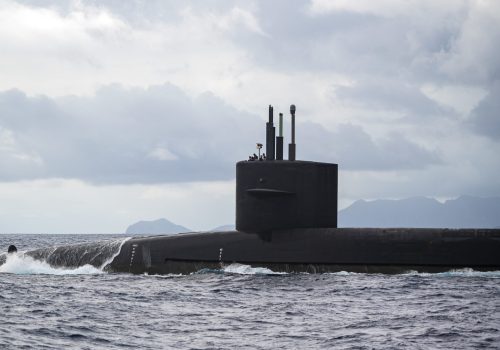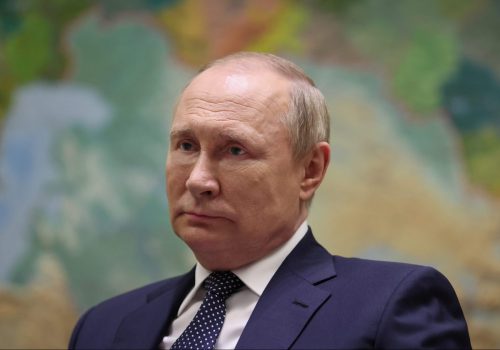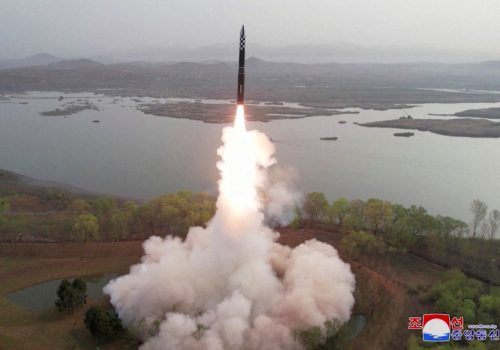Before embarking on arms control talks, Biden needs a nuclear deal with Congress
Arms control is entering its most uncertain period in decades. New START is set to expire in February 2026, and the ongoing war in Ukraine complicates any US-Russia negotiations toward a new agreement. Meanwhile, China could have 1,500 nuclear weapons by 2035 and has shown no real inclination to discuss limits. The Biden administration has said it will “engage in bilateral arms control discussions with Russia and with China without preconditions,” as US National Security Advisor Jake Sullivan explained in a speech on June 2. However, there is a precondition the US side should set with itself before any bilateral agreement moves forward.
The White House and Congress currently disagree over the type and number of nuclear weapons required to deter nuclear-armed adversaries in the coming decade, including Russia and China, but also North Korea and potentially Iran. As long as this disagreement persists, it casts doubt on the viability of whatever the administration might agree to in bilateral talks—in particular, whether any new treaty could be ratified or survive a change in administrations. However, a bargain is available that bridges these differences, and it would strengthen the president’s hand in arms control negotiations, if the administration and Congress seize the opportunity.
2010 plans do not address 2030 threats
In his June 2 speech at the Arms Control Association annual forum, Sullivan called attention to the growing threats posed by China, Russia, North Korea, and Iran. In doing so, he reaffirmed the warnings in the Biden administration’s National Defense Strategy and Nuclear Posture Review that as it approaches 2030, “the United States will need to deter two near-peer nuclear powers for the first time in its history.” To address this emerging challenge, the White House is continuing the nuclear modernization program begun by the Obama administration and reaffirmed by the Trump administration, though the Biden administration has canceled the development and deployment of a nuclear sea-launched cruise missile (SLCM-N) proposed in the 2019 Nuclear Posture Review.
These 2010 modernization plans assumed a reset with Russia. And they did not envision the rapid expansion of Chinese conventional and nuclear capabilities or the “no limits” partnership between an aggressive Moscow and Beijing bent on upsetting the international world order. This begs the question, then, whether the current nuclear modernization program—which amounts to a one-for-one replacement of nuclear force levels established in the 2010 New START—will be sufficient against two nuclear great powers.
In March, Senate Armed Services Committee Chairman Jack Reed (D-RI) asked General Anthony Cotton, head of US Strategic Command, how the US nuclear command is adapting to this “new trilateral nuclear competition.” Cotton replied that the United States is “in an absolutely good place today with our [nuclear] systems… but the basis of which we did our modernization efforts was on a 2010 threat.”
The divide over more nuclear weapons
The threats have grown manifestly worse since 2010, but the administration has been ambivalent about them. According to Sullivan in his recent speech, “the United States does not need to increase our nuclear forces to outnumber the combined total of our competitors in order to successfully deter them.” Sullivan added that “effective deterrence means that we have a ‘better’ approach—not a ‘more’ approach.” This position is at odds with Republican leaders in the House and Senate armed services committees, who have advocated “higher numbers and new capabilities” for nuclear weapons.
There are practical limits to how quickly the United States could expand its nuclear capabilities to address the expansion of China’s nuclear forces. One option by the time New START expires in 2026 is to restore nuclear warheads to existing intercontinental ballistic missiles (ICBMs) and submarine-launched ballistic missiles (SLBMs) that were removed to accommodate the lower New START force limits (a process called “uploading”). Additional nuclear bombs and cruise missiles could be loaded onto heavy bombers, and bombers previously converted to conventional weapons use only can be made ready for nuclear operations.
Importantly, Sullivan said in his speech that “the type of limits the United States can agree to after [New START] expires will of course be impacted by the size and scale of China’s nuclear build-up.” The administration will require a sense of what additional nuclear forces may be needed beyond New START, both to ensure any negotiated limits provide the United States with headroom to deploy sufficient forces in the future, and because adjustments to US nuclear posture will likely take years to implement.
It is entirely conceivable that Russia and the United States could agree to new (modestly larger) nuclear force limits that consider US requirements to address China’s expanding nuclear capabilities and limit and reduce Russia’s regional nuclear weapons and new novel long-range systems that are not covered under New START. Such an approach might maintain limits (albeit somewhat higher than the current 1,550 warhead limit in New START) on all US and Russian nuclear forces while allowing the United States to address the problem of two nuclear peers.
The bargain the White House and Congress could strike
Sullivan was correct when he said that “responsibly enhancing our deterrent capabilities allows us to negotiate arms control from a position of strength and confidence.” But if “responsibly” implies a set policy of no new US nuclear capabilities or no expansion of US strategic nuclear forces, then Russia has no reason to come to the negotiating table. A big incentive for Moscow to negotiate is if it fears the United States will build up its own nuclear arsenal. Just as important, an arms control approach that does not include some augmented nuclear capabilities will be a non-starter for Republicans and some Democrats on Capitol Hill.
A bargain is required. The Biden administration could, for example, agree to develop the SLCM-N and prepare for a nuclear upload onto existing ICBMs and SLBMs. In exchange, congressional Republicans could lend public support to the administration’s efforts, hopefully fruitful but perhaps not, to secure a post–New START follow-on arms control framework or agreement. In such a deal, the arms control community would see the value in continued constraints on arms competition, while the deterrence community would welcome augmented nuclear capabilities to answer the growth in Chinese nuclear forces. Russia also would have an interest in limiting the potential expansion of US nuclear forces. This approach leaves out China for the time being, given its unwillingness to engage in a dialogue; but any future limits on Russian and US forces will have to take into account the likely expansion of China’s nuclear arsenal.
During the question-and-answer period following his speech, Sullivan spoke about the bipartisan US Senate support of the 2010 New START. He failed to mention, however, that the Obama administration’s commitment—insisted upon by Republican senators as part of the deal for New START—to modernize each leg of the nuclear triad enabled that consensus. It is worth demonstrating once more that nuclear deterrence and arms control go hand in hand.
Robert Soofer is a senior fellow in the Forward Defense program in the Atlantic Council’s Scowcroft Center for Strategy and Security, where he leads its Nuclear Strategy Project. He formerly served as US deputy assistant secretary of defense for nuclear and missile defense policy and as a professional staff member on the Senate Armed Services Committee.
Further reading
Mon, May 1, 2023
US strategy and force posture for an era of nuclear tripolarity
Issue Brief By Keir Lieber, Daryl G. Press
Keir Lieber and Daryl Press lay out a vision for the future of US nuclear doctrine and strategy under the condition of nuclear tripolarity.
Fri, Sep 16, 2022
Memo to the president: How to deter Russian nuclear use in Ukraine—and respond if deterrence fails
Memo to... By
The US should issue vague public threats of serious consequences should Russia use nuclear weapons and be prepared to follow through with conventional military strikes if deterrence fails.
Thu, Apr 27, 2023
Not every North Korean missile needs a response. South Korea and the US should focus more on readiness and deterrence.
New Atlanticist By Jessica Taylor
The nuclear collaboration announced by the US and South Korean presidents this week is the type of strategic measure the allies need to focus on, rather than a reactive approach.
Image: A B-52H Stratofortress assigned to the 419th Flight Test Squadron undergoes pre-flight procedures at Edwards Air Force Base, CA, USA. The aircraft conducted a captive-carry flight test of the AGM-183A Air-Launched Rapid Response Weapon Instrumented Measurement Vehicle 2 at the Point Mugu Sea Range off the Southern California coast. The US Air Force carried out the first successful test of its complete air launched hypersonic missile, the Air Force said in a statement.


